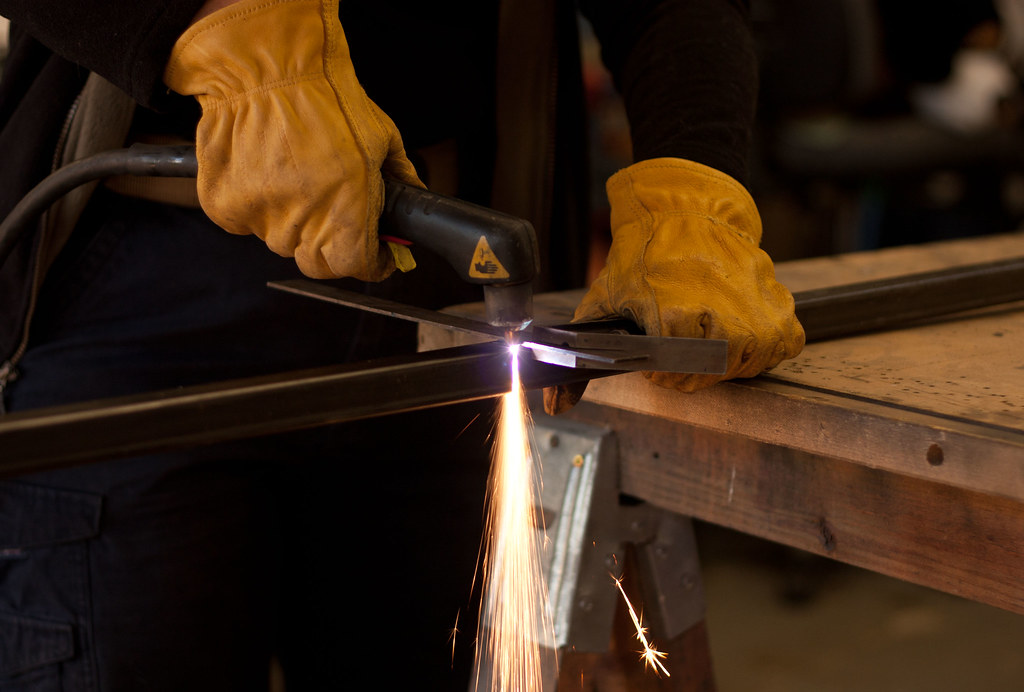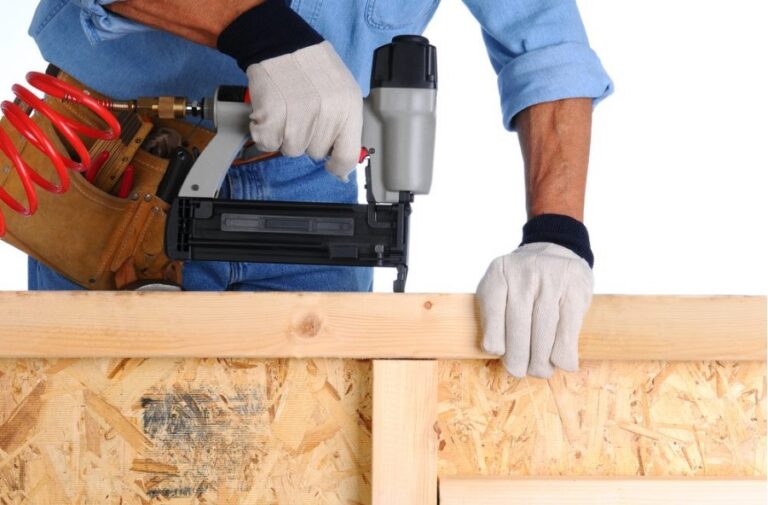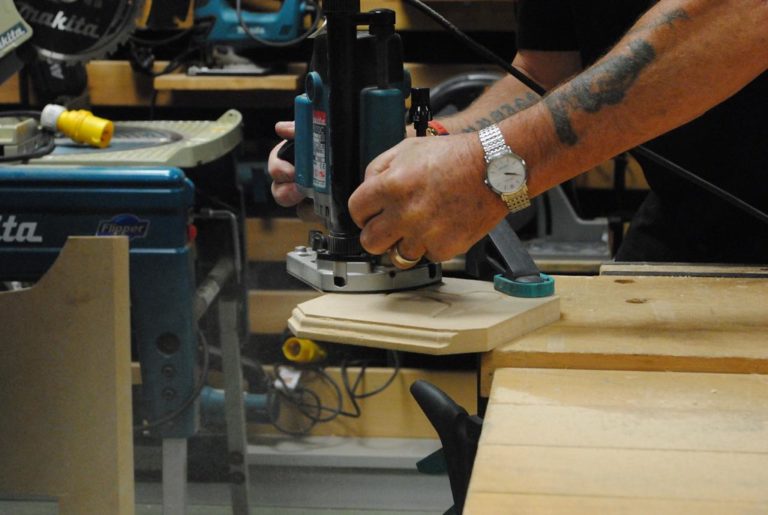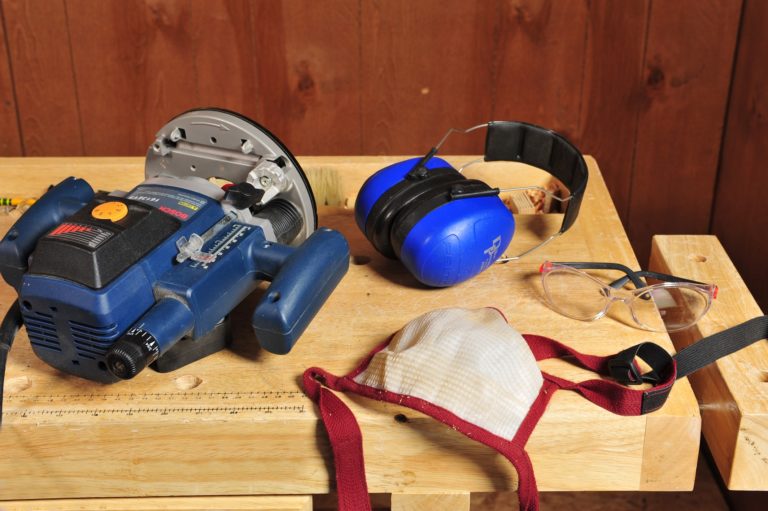Benefits of using a Plasma Cutter
While it is often argued that the plasma cutter is superior to the oxy-fuel cutter and the drills and saws of olden days, the true nature and range of these benefits of using a plasma cutter are rarely spelled out, or worse, explained in extremely technical language. While it is true that the concept of the plasma cutter is one of ongoing scientific study, this does not mean that the advantages cannot be outlined in a simple manner. Such explanation is made all the more easier because they stem directly from the cutting process which we’d outlined while discussing the best plasma cutters. Without repeating the process, we have divided the benefits into a number of sections based on their nature.

Better and Faster Cuts
Since the “fuel” used in the plasma cutter is ambient air (or an inert gas like nitrogen), oxidation of the metal takes place only to a very minimal extent. This produces a host of benefits including:
- Smooth cut edges: No rough edges as the molten metal solidifies in a manner that produces rounded edges. Such edges, furthermore, require little polishing as they contain few impurities due to the minimal oxidation involved.
- Faster cutting than any other metal cutter: Plasma cutters are 90% faster than oxy-fuel cutters when the metal is 25mm or less thick, and up to 12 times faster than oxy-fuel when the metal has a higher thickness.
- Rapid Inside Cutting/Piercing: Because of the high temperature of plasma, most cutters can achieve inside piercing of 15mm thick metal in less than two seconds, while oxy-fuel cutters require 30 seconds to achieve the same feat.
Easy and Convenient to Use
- Ease of Use: It is very easy to learn how to use a plasma cutter because the very construction and procedure require the use of a nozzle shield. This, coupled with mechanisms for keeping the nozzle at a certain height above the metal ensure that many of the problems associated balancing, height and angle are removed. These, as shall be seen in plasma cutter reviews, make for a much easier learning gradient.
- Powerful Against Conductors: The electric arc interacts well with electrically conductive materials, making cutting an easier and cleaner task by reducing metal resistance to a minimum. Since aluminium, copper, steel and iron are all good conductors, this facet makes virtually all major metals ideal candidates for the best plasma cutter.
Better End Results and Easier Cleanup
- Smaller Heat Affected Zone /kerf zone: The area around the cut that bears burns, oxidized particles and aberrations due to the cutting process is known as the affected zone or kerf zone. While such a zone appears to a lesser or greater extent in virtually every form of heat-induced cutting, the size of the zone is reduced substantially in case of plasma cutters because of reduced oxidation. Further, because the arc is more focused on the area being cut, the benefits of using a plasma cutter include reduced deviations from the cutting line, a minimal area is affected.
- Substantially reduced slag: Slag refers to oxidized and non-oxidized impurities that line the cut once the cutting is complete. Slag arises because when metal is heated to a high temperature, its reactivity increases and it combines with oxygen and also certain impurities like silicon that are naturally present in the metal. These are lighter than the metal itself and stay on the surface, creating an unpleasant and rough look after the metal has been cooled. While oxy-fuel cutters exacerbate this trend by providing a huge amount of oxygen to the metal, plasma cutters use ordinary air that has much less propensity for oxidation. This, as we have seen while going through the plasma cutter reviews, reduces slag and keeps the cut clean, thus making post-cut scraping and cleaning largely superfluous.
Costs and Risks Reduced
- Reduction of usage risks: Plasma does not require any flammable fuel or open flame, and thus can be operated by people who do not have expensive insurance. Further, because elimination of fuel also means that the procedure is made simpler, there are less chances of anything going wrong, thus making the overall process more predictable.
- Cooler Units: One of the oft-neglected benefits of using a plasma cutter is that it remains far cooler than the average oxy-fuel torch. This is because the heat produced by the arc is localized and concentrated, while the same heat created by the oxy-fuel torch is far more diffuse and this raises the temperature of all nearby units, including the torch itself.
- Reduction of costs: Because expensive gear, insurance, safety measures and fuel transportation costs are not involved, the process of cutting metals is made much cheaper. As we shall mention again when analysing the key features of the best plasma cutter, actual reduction of costs varies a lot from metal to metal. However, since the easy interaction of the electric arc with the metal makes for easier cutting of virtually all major metals, improvements of speed and efficiency ensure that the reduction of overhead costs is almost always reinforced by reduction of operating costs.
- Benefits arising from innovation: The latest plasma cutters in the market have far fewer discrete parts, and each of these are accessible without special tools. Further, the weight of the products has come down drastically. So much so that modern cutters weighing just 9kg can cut through metal 12mm thick.
Conclusion
It goes without saying that the benefits vary directly with the age and the extent to which the user can figure out how to maintain a plasma cutter in top shape. That said, the benefits outlined above are likely to be found in most cutters by virtue of them being ingrained in the very procedure of cutting itself. With innovation already bringing in further benefits of using a plasma cutter, it would not be wrong to expect these cutters to completely dominate the world of metal fabrication in the coming years.







